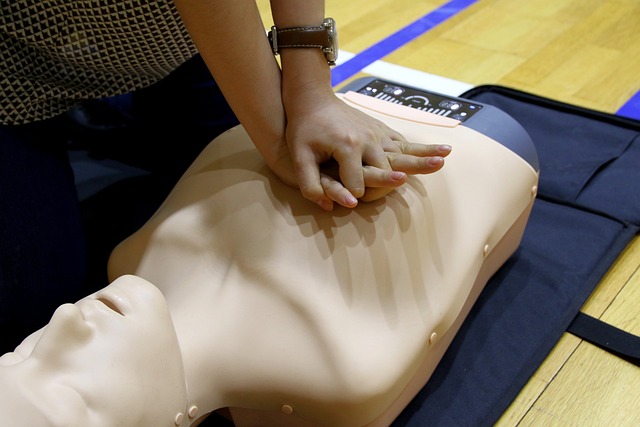Learning CPR is a critical ability that can come in handy during unexpected emergencies. To sustain the required familiarity and expertise, professionals suggest upgrading their CPR training every 1-2 years. Therefore, it’s crucial to assess which method is more productive for renewing your certification; online or in-person. Let’s analyze both options’ advantages and disadvantages below before making an informed decision.
In-Person CPR Recertification
In-person CPR recertification comes with several advantages. Firstly, it allows for hands-on training that can help individuals improve their CPR techniques. This can be especially helpful for individuals who lack confidence or have limited experience in performing CPR. Furthermore, in-person training can provide the opportunity for immediate feedback and correction by instructors, enhancing the learning experience.
Secondly, in-person CPR recertification can facilitate group learning and teamwork skills. Trainees can work together in simulated scenarios, practicing CPR on different types of manikins. Additionally, in-person training can help individuals connect with CPR instructors and other students, which can be beneficial professionally or socially.
Disadvantages
However, in-person CPR recertification can have a few disadvantages. For one, it may not be as flexible in terms of scheduling since individuals need to attend classes at specific times. This can be inconvenient for those with busy schedules or limited access to training centers. Moreover, in-person training may vary depending on the instructor’s qualifications and teaching style.
Online CPR Recertification
One benefit of online CPR renewal is its flexibility, allowing learners to complete the program at their convenience. This makes it a feasible option for individuals with hectic schedules or living in remote locations where access to training centers may be limited. In addition, opting for virtual courses tends to be more cost-efficient compared to attending physical classes.
Online learning also provides uniform training devoid of discrepancies frequently associated with conventional classroom-style teaching, like differences in instructors’ instructional approaches, which could negatively impact the caliber of knowledge dissemination.
Disadvantages
However, online CPR recertification may not be suitable for everyone. Some individuals may find it challenging to learn through virtual means and may need hands-on experience under the supervision of a qualified instructor. Moreover, online CPR courses may lack the immediate feedback and correction provided by instructors during in-person training. Ultimately, the decision to choose between in-person and online CPR recertification depends on individual preferences and needs.
Which Option is Right for You
Determining the most suitable CPR recertification option, whether in-person or online, necessitates examining different aspects. It is crucial to take into account personal inclinations, learning methods, and flexibility when reaching a conclusion. Moreover, one’s self-assurance level and familiarity with performing CPR should be taken into consideration when deciding which method of certification would best suit them.
In essence, both in-person and virtual options for obtaining a CPR certificate present specific advantages as well as limitations. Ultimately, making an informed decision will depend on individual needs and circumstances concerning their education procedure preferences. However regardless of what path you choose to become accredited, acquiring life-saving skills can come handy during cardiac crises, no doubt about it.
Conclusion
In life-threatening situations, knowing CPR can be a vital skill that could mean saving someone’s life. Thus, it is crucial to maintain current CPR certification.
If you are contemplating between opting for online or in-person recertification courses, it is advisable to consider your personal preferences, learning style, and flexibility requirements. It is also crucial to take into account your confidence level regarding performing the technique amid a potential emergency situation.
Online CPR education provides numerous advantages, such as enhanced accessibility, consistency of study materials, and convenience. Nonetheless, bear in mind that some students may need hands-on experience supervised by an experienced trainer before feeling thoroughly comfortable with applying what they’ve learned through virtual training modules.
Blended learning is another option to consider, which combines both in-person and online elements. This way, students can learn at their own pace using the online modules and then practice hands-on skills with an instructor to verify their performance. In conclusion, regardless of the method chosen for CPR recertification, what matters most is acquiring the skills to save a life.
